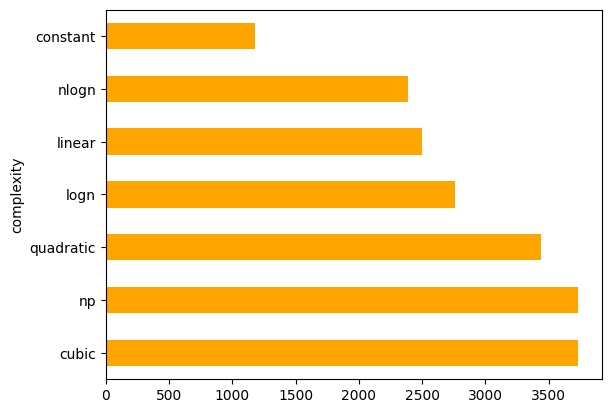Analyze a dataset on the Hub
Analyze a dataset on the Hub
In the Quickstart, you were introduced to various endpoints for interacting with datasets on the Hub. One of the most useful ones is the /parquet endpoint, which allows you to get a dataset stored on the Hub and analyze it. This is a great way to explore the dataset, and get a better understanding of it’s contents.
To demonstrate, this guide will show you an end-to-end example of how to retrieve a dataset from the Hub and do some basic data analysis with the Pandas library.
Get a dataset
The Hub is home to more than 40,000 datasets across a wide variety of tasks, sizes, and languages. For this example, you’ll use the codeparrot/codecomplex dataset, but feel free to explore and find another dataset that interests you! The dataset contains Java code from programming competitions, and the time complexity of the code is labeled by a group of algorithm experts.
Let’s say you’re interested in the average length of the submitted code as it relates to the time complexity. Here’s how you can get started.
Use the /parquet endpoint to convert the dataset to a Parquet file and return the URL to it:
Copied
import requests
API_URL = "https://datasets-server.boincai.com/parquet?dataset=codeparrot/codecomplex"
def query():
response = requests.get(API_URL)
return response.json()
data = query()
print(data)
{'parquet_files':
[
{'dataset': 'codeparrot/codecomplex', 'config': 'default', 'split': 'train', 'url': 'https://boincai.com/datasets/codeparrot/codecomplex/resolve/refs%2Fconvert%2Fparquet/default/train/0000.parquet', 'filename': '0000.parquet', 'size': 4115908}
],
'pending': [], 'failed': []
}Read dataset with Pandas
With the URL, you can read the Parquet file into a Pandas DataFrame:
Copied
import java.io.*;\nimport java.math.BigInteger…
quadratic
1179_B. Tolik and His Uncle
CODEFORCES
import java.util.Scanner;\n \npublic class pil…
linear
1197_B. Pillars
CODEFORCES
import java.io.BufferedReader;\nimport java.io…
linear
1059_C. Sequence Transformation
CODEFORCES
import java.util.;\n\nimport java.io.;\npubl…
linear
1011_A. Stages
CODEFORCES
import java.io.OutputStream;\nimport java.io.I…
linear
1190_C. Tokitsukaze and Duel
CODEFORCES
Calculate mean code length by time complexity
Pandas is a powerful library for data analysis; group the dataset by time complexity, apply a function to calculate the average length of the code snippet, and plot the results:
Copied

Last updated